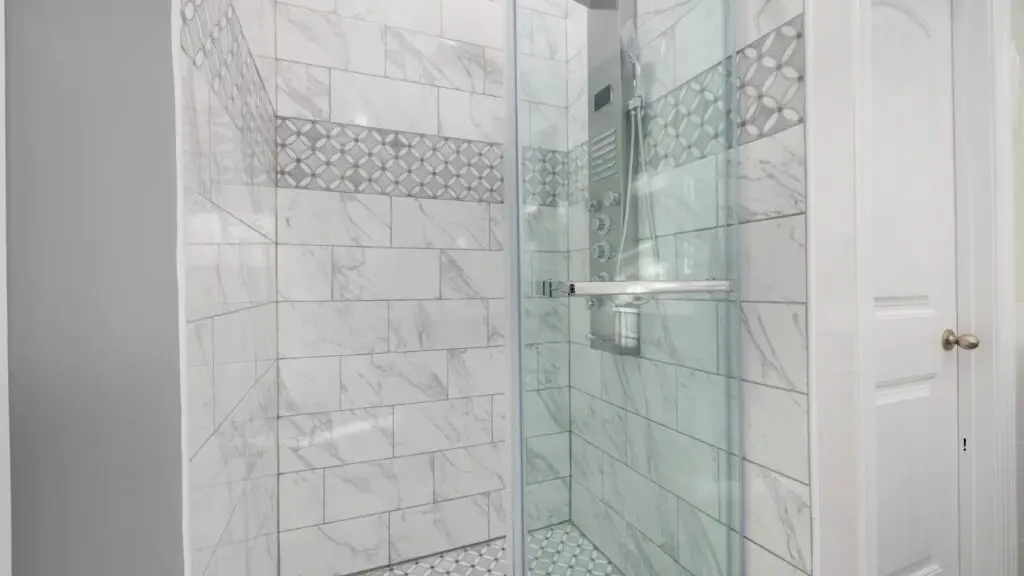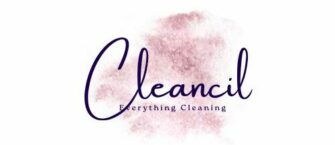Mold in the shower is a common household nuisance that can be both unsightly and potentially hazardous to your health.
Thriving in damp and humid environments, these pesky fungi can quickly become an unwelcome guest in your bathroom.
Choosing the best cleaner for mold in your shower is crucial to maintaining a safe, hygienic and aesthetically pleasing space.
In this article, we will explore what mold is, why it forms and of course the top cleaning solutions for getting rid of mold that are available on the market today.

Why Does Mold Form In Showers? (And Why You Need To Get Rid Of It ASAP)
Mold forms in showers primarily due to the presence of moisture, warmth and organic material.
Showers provide the perfect breeding ground for mold growth as they create a consistently damp and humid environment that these fungi thrive in.
Soap scum, body oils and dead skin cells are organic materials that serve as food sources for mold, further facilitating its growth on shower surfaces like tiles, grout and ceiling.
Getting rid of mold in the shower is essential for the following reasons:
- Health concerns: Mold exposure can lead to various health issues particularly in individuals with allergies, asthma or weakened immune systems. Common symptoms include sneezing, coughing, nasal congestion, itchy eyes and skin irritation. In some cases, prolonged exposure to mold can cause more severe respiratory problems.
- Aesthetic appeal: Mold growth can be unsightly, causing discoloration and unpleasant odors in your bathroom. Removing mold will help maintain a clean and visually appealing space, making it more enjoyable for you and your guests.
- Structural integrity: Over time, unchecked mold growth can cause damage to the surfaces it inhabits, including tiles, grout and ceiling. This damage may eventually lead to leaks or even structural issues within your bathroom. By eliminating mold, you are protecting the integrity and longevity of your bathroom fixtures.
- Preventing further growth: Addressing mold growth promptly can help prevent it from spreading to other areas of your bathroom, making it easier to manage and maintain a mold-free space.
The Natural, Homemade Cleaners For Mold In Shower
Natural and safe solutions for getting rid of mold in the shower offer an eco-friendly, non-toxic, and cost-effective alternative to harsh commercial cleaning products. These natural solutions are generally safe for most surfaces and can be used regularly without causing damage. Below is a quick list of them and following it is a more detailed explanation of how each solution works:
- Vinegar
- Baking Soda
- Hydrogen Peroxide
- Lemon juice
- Borax
- Grapefruit Seed Extract
- Tea Tree Oil
Vinegar: White vinegar is a natural acidic solution that effectively kills mold and inhibits its growth. It is safe for use in most surfaces and has the added benefit of removing soap scum and mineral deposits. Vinegar can be diluted with water for a milder solution or used undiluted for stubborn mold.
Baking Soda: Baking soda is a mild abrasive that helps remove mold while neutralizing odors. It is safe for most surfaces and can be mixed with water to create a paste for scrubbing away mold. Baking soda can also be combined with vinegar for an even more potent cleaning solution.
Hydrogen Peroxide: Hydrogen peroxide is a powerful antifungal and antibacterial agent that effectively kills mold. It is safe for most surfaces, including grout and tiles but should be used with caution on colored surfaces as it can cause bleaching. Dilute 3% hydrogen peroxide with water before applying it to the moldy area.
Lemon juice: The natural citric acid in lemon juice works to kill mold and remove stains. It is safe for most surfaces and leaves a pleasant citrus scent. Apply the juice directly to the moldy area, let it sit for a few minutes, then scrub and rinse.
Borax: Borax is a natural mineral that helps to remove mold and inhibit its growth. It is safe for most surfaces and can be mixed with water to create a cleaning solution. Apply the borax solution to the moldy surfaces, scrub and rinse thoroughly.
Grapefruit Seed Extract: Grapefruit seed extract is a natural antifungal that effectively combats mold. It is odorless and non-toxic, making it a safe option for most surfaces. Mix the extract with water and apply it to the moldy area, allowing it to sit before wiping it clean.
Tea Tree Oil: Tea tree oil is a powerful antifungal essential oil that kills mold and inhibits its growth. It is safe for most surfaces but should be used sparingly due to its potency. Dilute the oil with water, apply it to the moldy area, and let it sit for a few minutes before wiping clean.
When using these natural and safe solutions, it is essential to ensure proper ventilation and consistent application. Furthermore, maintaining a clean and dry shower environment will help prevent mold growth, keeping your bathroom fresh and hygienic.
Is Bleach Or Vinegar Or Hydrogen Peroxide Better To Kill Mold?
Bleach, vinegar, and hydrogen peroxide are all effective at killing mold, but each has its own advantages and disadvantages, making them more suitable for different situations and surfaces. Here’s a comparison of these three mold-killing agents:
Bleach: Bleach is a powerful chemical that effectively kills mold on non-porous surfaces like glass, tiles and countertops. However, bleach can emit strong fumes, making it necessary to use it in a well-ventilated area. Additionally, bleach may damage or discolor certain materials, including fabrics and some metals. It is also not effective at penetrating porous surfaces like wood, drywall or grout, where mold can grow beneath the surface.
Vinegar: White vinegar is a natural and eco-friendly option for killing mold. It is less harmful to humans and the environment compared to bleach. Vinegar is effective on both non-porous and porous surfaces, as it can penetrate and kill mold at the roots. However, vinegar might not be as potent as bleach or hydrogen peroxide in killing mold, and it can leave a strong odor that some people may find unpleasant.
Hydrogen Peroxide: Hydrogen peroxide is an antifungal and antibacterial agent that is effective at killing mold on a variety of surfaces, including porous materials. It is less harmful to the environment than bleach and has a milder odor than vinegar. However, hydrogen peroxide can cause bleaching on certain surfaces, so it should be tested on a small, inconspicuous area before using it on a larger scale.
What Is The Best Product To Kill Mold In The Shower?
There are several effective commercial products available to kill mold in the shower.
Here are four of the best mold-killing products, along with explanation of their active ingredients and why they are considered top choices:
RMR-86 Instant Mold & Mildew Stain Remover:
This fast-acting product contains sodium hypochlorite (a bleach-based compound) as its active ingredient, which makes it highly effective at removing mold and mildew stains. RMR-86 is easy to use, as it does not require scrubbing. It works on various surfaces, including tile, grout and fiberglass. However, it should not be used on porous surfaces or materials that can be damaged by bleach.
Concrobium Mold Control:
Concrobium Mold Control uses a unique blend of inorganic salts that eliminate mold and prevent its regrowth. This product is non-toxic, odorless and does not contain bleach, ammonia or volatile organic compounds (VOCs), making it a safe option for various surfaces, including wood, drywall and concrete. It works by encapsulating and crushing mold spores, ensuring long-lasting protection against future mold growth.
Mold Armor Instant Mold & Mildew Stain Remover:
Mold Armor contains a powerful bleach-based formula that effectively eliminates mold and mildew stains. It works on a variety of surfaces, such as tiles, grout, shower curtains and bathroom fixtures. Mold Armor is easy to use, as it requires no scrubbing—simply spray the product and watch the stains disappear. However, it is not recommended for use on porous surfaces or materials that can be damaged by bleach.
EC3 Mold Solution Spray:
EC3 Mold Solution Spray utilizes a natural formula containing citrus seed extracts, tea tree oil and other natural botanicals to kill mold and mildew. This product is non-toxic, biodegradable and safe for use on various surfaces, including wood, drywall and fabrics. EC3 Mold Solution Spray not only eliminates mold but also helps control musty odors associated with mold and mildew growth.
Each of these products is considered one of the best for killing mold in the shower due to their effectiveness, ease of use and suitability for a range of surfaces. When selecting a mold-killing product, consider your specific needs, the surfaces you are treating and any personal preferences regarding natural versus chemical-based solutions.
How Do You Clean Black Mold In Shower Silicone?
Cleaning black mold from shower silicone can be challenging, as silicone is a porous material that allows mold to grow within its surface. However, with the right steps and cleaning agents, you can effectively remove black mold from shower silicone.
Here’s a step-by-step guide:
- First, open the windows or turn on the exhaust fan in your bathroom to ensure proper ventilation while cleaning.
- Wear rubber gloves, a face mask and goggles to protect yourself from mold spores and cleaning agents.
- Select a mold-killing cleaning solution that is safe for use on silicone. Some options include white vinegar, hydrogen peroxide, or a commercial mold remover designed for silicone surfaces. Avoid using bleach, as it can damage silicone.
- If using vinegar or hydrogen peroxide, mix equal parts of the chosen solution with water in a spray bottle. If using a commercial mold remover, follow the manufacturer’s instructions for dilution. Spray the cleaning solution generously onto the affected silicone areas.
- Allow the cleaning solution to sit on the silicone for at least 10-15 minutes to break down and kill the mold spores.
- Using a soft-bristle brush or an old toothbrush, gently scrub the silicone to remove the mold. Be careful not to damage the silicone while scrubbing.
- After scrubbing, rinse the area with clean water to remove any remaining cleaning solution and mold residue.
- Use a clean cloth or paper towel to dry the silicone and surrounding surfaces thoroughly.
- If any mold remains, repeat the cleaning process until the silicone is free of black mold.
- Keep the shower area clean and dry to prevent future mold growth. Regularly clean and maintain the silicone surfaces, and ensure proper ventilation in your bathroom.
Please note that if the mold has penetrated too deeply into the silicone, it may be impossible to clean entirely, and you may need to consider replacing the affected silicone sealant.
How Do You Keep Your Shower Mold Free?
Keeping your shower mold-free requires consistent cleaning and maintenance, as well as some preventive measures to reduce humidity and moisture.
Here are some tips to help you maintain a mold-free shower:
- Use an exhaust fan or open a window during and after showers to remove excess moisture and reduce humidity in the bathroom.
- If your bathroom tends to be humid, consider using a dehumidifier to reduce moisture levels and discourage mold growth.
- After each shower, use a squeegee or towel to remove water from the walls, floor and shower door. This will help prevent mold growth by reducing the amount of moisture on surfaces.
- Regularly clean your shower with a mold-inhibiting cleaning solution. This includes scrubbing tiles, grout and silicone sealant to remove soap scum, body oils and other organic materials that can serve as food sources for mold.
- Regularly wash your shower curtains and liners according to the manufacturer’s instructions to prevent mold and mildew buildup.
- Hang bath mats and towels to dry between uses, and wash them frequently to prevent mold growth.
- Check for and promptly repair any leaks in your shower or bathroom fixtures to minimize water damage and mold growth.
- Seal the grout in your shower annually to prevent moisture from seeping into the tiles and fostering mold growth.
- When possible, use mold-resistant materials in your bathroom such as mold-resistant paint, grout and silicone sealant.
- Regularly clean and dry items that are stored in the shower such as shampoo bottles, soap dishes and loofahs to prevent mold growth.
By incorporating these practices into your routine, you can significantly reduce the risk of mold growth and maintain a clean, healthy shower environment.


